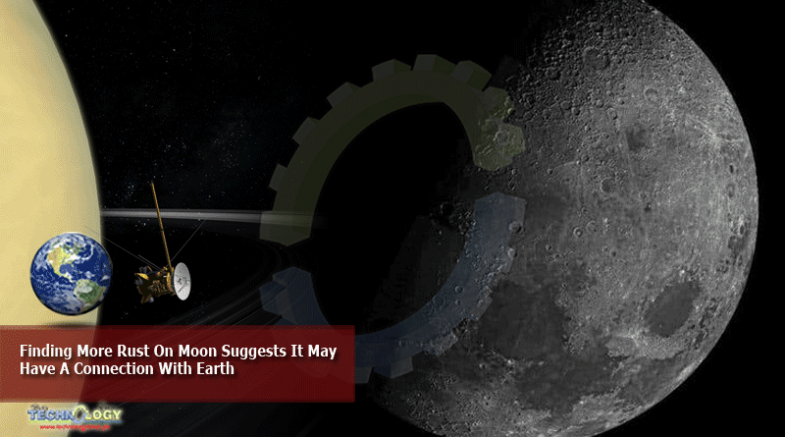The Moon Was Once Considered Free Of Rust. The Reddish Compound Called Iron Oxide Or Hematite Is Prevalent On Earth, And Even On Mars.

But experts were not expecting to detect it on our closest cosmic neighbor.
“The Moon is a terrible environment for hematite to form in,” lead author Dr. Shuai Li of the University of Hawaii, said. The lunar body is thought to lack the ingredients that help rust form: oxygen and liquid water. So this has raised a question: how does the Moon have rust on its surface?
It is very puzzling. We did not see rust in the samples from Moon’s equator, which was carried to Earth by the Apollo Mission, Dr. Li told MEA WorldWide (MEAWW). But recent data from the Moon’s pole had a different story to tell.
Chandrayaan-1’s Moon Mineralogy Mapper instrument or M3 revealed that the lunar body’s poles had a very different composition than the rest of it. The light that bounced off the surface matched with that of pure rust found on Earth. “This made me feel it is hematite,” he explained. Astronomers study reflected light to identify elements in space.
Intrigued, Dr. Li reached out to Abigail Fraeman and Vivian Sun, both scientists at NASA’s Jet Propulsion Laboratory. “At first, I totally didn’t believe it. It shouldn’t exist based on the conditions present on the Moon,” Fraeman said. “But since we discovered water on the Moon, people have been speculating that there could be a greater variety of minerals than we realize if that water had reacted with rocks.”
Together, they were able to confirm that Moon does have rust on its surface. “In the end, the spectra were convincingly hematite-bearing, and there needed to be an explanation for why it’s on the Moon,” Sun said.
Earth could be partly responsible
According to Dr. Li, finding more hematite on the side facing Earth suggests that it may have some connection with our planet. The researchers think that oxygen was blown away from our planet by the solar wind: high-speed charged particles from the sun.
Typically, solar wind is blocked from entering our planet due to Earth’s magnetic field. “But on the top of the atmosphere, the magnetic field is much weaker, and solar wind can blow away some particles from the upper atmosphere,” he explained.
The Earth’s magnetic field interacts with the solar winds to form a long-tail named magnetotail, which stretches further into space. The Moon receives oxygen when it travels into the magnetotail every month during the full moon, he added.
What about liquid water? The Moon contains water ice — but not in places where rust was prevalent. The team speculates that the source could be from the dust cloud that has engulfed the lunar body. The fast-moving dust particles could hit the Moon and release water molecules from the surface, which then gets mixed with iron in the lunar soil. Besides, dust particles might also be carrying water, they added.
Dr. Li hopes that future missions bring home some hematite samples. “It can help us better understand the formation mechanism. Also, it may record the evolution of the Earth’s atmosphere in the past billions of years,” he noted. “Through studying those samples, we can better understand our own Earth.”
This news was originally published at meaww.com
